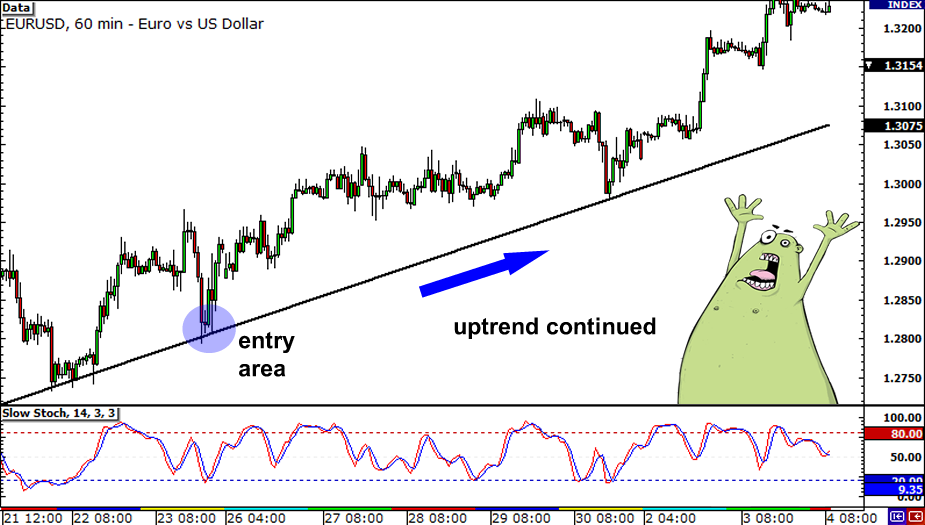
Long-term investment means investing in long-term cash flows, not on short-term fluctuations. Short-term investors, on the other hand, focus on short-term fluctuations. They act as traders. Long-term investors are focused on long-term cash flow and value drivers. Although they may have different approaches, both emphasize diversification. The following discussion discusses long-term investing in the context of stock selection.
Shifting from price drivers towards value drivers in the investment horizon for long-term investors
Long-term investors' focus shifts away from price drivers and towards value-based factors. These include cash flows, reinvestment, and cash flow. Both investors are attracted to current profits. But, both long-term investors recognize the importance and value of these elements. Growth investors are more concerned with the potential for unanticipated value creation, while value investors concentrate on the current operating income. GARP investors, on the other hand, focus on the balance between price and cash flow.
Another key characteristic of long-term investors is their capacity for long-term investing. They are not motivated to trade, and can focus on long-term results. This means that they can choose when they buy or sell. Long-term investors can use discretion to identify investments that have real potential for long term value. But, being able to trade with discretion does not guarantee success in investing.

Portfolio design for long-term investors
Your financial plan's backbone is your investment portfolio. They are crucial for turning hard-earned savings into enough funds. The design of an investment portfolio involves choosing the right mix and selecting securities from these categories. You also need to monitor your investments. Successful investors know the importance of asset diversification and focus on the fundamentals rather than short-term volatility. Here are some suggestions for creating an investment portfolio.
Portfolio design requires asset allocation. This involves allocating your capital to different types depending on their risk and potential returns. An investor might choose to split his equity investments between different sectors, companies, domestic and foreign stock. The investor may choose to split the bond portion of their portfolio between short-term and longer-term bonds, corporate debt or government debt.
Tracking dividends
You should be investing in dividends, as well as capital gains, if you want to be a long-term investor. Dividend investing can be a powerful strategy for building wealth and it can be used over a long period. Dividend aristocrats refer to well-established companies who have increased their dividend payments over the past 25 year. These stocks are well-known and will likely generate steady cash flow.
It is important for dividends to have a lower volatility level than stock prices. Because they are representative of the true earning power a company, dividends have a lower volatility than stock prices. Tracking dividends is essential for long-term investing, regardless of whether you're using them to finance your lifestyle or add cash to your portfolio. Sharesight is a platform that allows you to track all of your investments. This software allows for you to track your monthly incomes and distributions. You can also filter by the amount of dividends paid.

A key element to long-term investment success is teamwork
Working as part of a team provides opportunities for personal growth and development. You will be able to draw on different skills and experiences when working in a group, unlike an individual. By working together, you will benefit from one another's knowledge and help build your team. You will also be able to work with new people and be more efficient in a team setting. It is also beneficial to be open to new ideas and a good listener.
Teams are people who share a common goal. To achieve a goal, team members need to work together. They also need to use the collective knowledge and experience of the group. It applies to individuals and teams as well as large corporations. As a team player, it is important to be open to constructive criticism and to offer suggestions. It's possible to improve your investment strategies if you are open to the suggestions and feedback from others.
FAQ
What are the 4 types?
There are four main types: equity, debt, real property, and cash.
You are required to repay debts at a later point. It is usually used as a way to finance large projects such as building houses, factories, etc. Equity is when you purchase shares in a company. Real estate is land or buildings you own. Cash is what you have now.
You can become part-owner of the business by investing in stocks, bonds and mutual funds. You share in the profits and losses.
Should I purchase individual stocks or mutual funds instead?
The best way to diversify your portfolio is with mutual funds.
However, they aren't suitable for everyone.
If you are looking to make quick money, don't invest.
You should opt for individual stocks instead.
You have more control over your investments with individual stocks.
Online index funds are also available at a low cost. These funds allow you to track various markets without having to pay high fees.
Which age should I start investing?
An average person saves $2,000 each year for retirement. If you save early, you will have enough money to live comfortably in retirement. If you don't start now, you might not have enough when you retire.
You should save as much as possible while working. Then, continue saving after your job is done.
The earlier you start, the sooner you'll reach your goals.
Start saving by putting aside 10% of your every paycheck. You might also consider investing in employer-based plans, such as 401 (k)s.
Contribute enough to cover your monthly expenses. After that, it is possible to increase your contribution.
What kind of investment vehicle should I use?
When it comes to investing, there are two options: stocks or bonds.
Stocks are ownership rights in companies. They offer higher returns than bonds, which pay out interest monthly rather than annually.
Stocks are the best way to quickly create wealth.
Bonds are safer investments than stocks, and tend to yield lower yields.
Keep in mind that there are other types of investments besides these two.
These include real estate and precious metals, art, collectibles and private companies.
Should I buy real estate?
Real Estate Investments can help you generate passive income. However, they require a lot of upfront capital.
If you are looking for fast returns, then Real Estate may not be the best option for you.
Instead, consider putting your money into dividend-paying stocks. These pay monthly dividends, which can be reinvested to further increase your earnings.
Statistics
- An important note to remember is that a bond may only net you a 3% return on your money over multiple years. (ruleoneinvesting.com)
- Some traders typically risk 2-5% of their capital based on any particular trade. (investopedia.com)
- Most banks offer CDs at a return of less than 2% per year, which is not even enough to keep up with inflation. (ruleoneinvesting.com)
- Over time, the index has returned about 10 percent annually. (bankrate.com)
External Links
How To
How to Invest into Bonds
Investing in bonds is one of the most popular ways to save money and build wealth. You should take into account your personal goals as well as your tolerance for risk when you decide to purchase bonds.
In general, you should invest in bonds if you want to achieve financial security in retirement. Bonds may offer higher rates than stocks for their return. If you're looking to earn interest at a fixed rate, bonds may be a better choice than CDs or savings accounts.
If you have the money, it might be worth looking into bonds with longer maturities. This is the time period before the bond matures. Investors can earn more interest over the life of the bond, as they will pay lower monthly payments.
There are three types available for bonds: Treasury bills (corporate), municipal, and corporate bonds. Treasuries bills are short-term instruments issued by the U.S. government. They are low-interest and mature in a matter of months, usually within one year. Companies such as General Motors and Exxon Mobil Corporation are the most common issuers of corporate bonds. These securities have higher yields that Treasury bills. Municipal bonds are issued in states, cities and counties by school districts, water authorities and other localities. They usually have slightly higher yields than corporate bond.
If you are looking for these bonds, make sure to look out for those with credit ratings. This will indicate how likely they would default. The bonds with higher ratings are safer investments than the ones with lower ratings. Diversifying your portfolio in different asset classes will help you avoid losing money due to market fluctuations. This protects against individual investments falling out of favor.